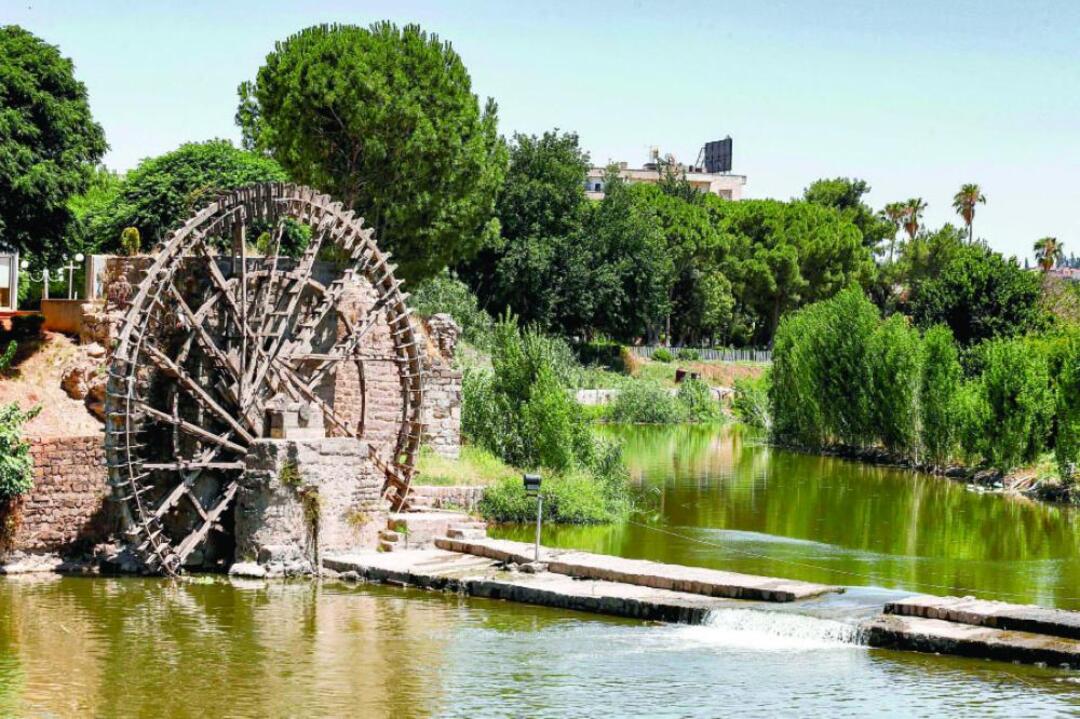-
Ongoing Suffering in Hama Due to Sewage Flow in the Orontes River

The city of Hama is enduring continuous suffering due to the flow of sewage into the Orontes River, a sight that residents have become accustomed to, which has become a daily reality for them.
This tragic situation exacerbates the residents' hardships throughout the seasons, with no final solution from the authorities under the regime, who have been unable to address the worsening problem.
Additionally, visitors to the city are faced with the sight of polluted water and the smell of sewage in Al-Assi Square and near the Al-Jasria waterwheel by Um Al-Hassan Park, which tarnishes the tourist appeal and repels visitors.
According to the "Al-Watan" newspaper, which is close to the regime, the new Governor of Hama conducted a tour of the area and witnessed the problem firsthand, prompting him to hold an urgent meeting with the relevant parties to discuss emergency solutions and find a comprehensive resolution to alleviate the suffering of residents and make the city more attractive to visitors.
It was noted that the responsible authorities started implementing temporary solutions, as the General Company for Engineering Studies, in cooperation with the Sewage Company, began wrapping the sewage line with a metal shell to temporarily reduce pollution.
In a statement by Mohammed Al-Haj Hassan, head of the Studies Division in the Technical Services Department, he mentioned that a comprehensive technical study has been prepared to solve the problem permanently at an estimated cost of 432 million Syrian pounds, including the installation of new pollution-resistant pipes.
The sewage problem is not limited to Hama alone; most Syrian provinces under regime control suffer from neglect of sewage infrastructure, making the environmental and health situation catastrophic.
In many areas, sewage is directly dumped into rivers and valleys, resulting in water contamination and deteriorating quality of the surrounding environment, increasing the risk of disease outbreaks, which warns of a long-term health disaster.
This crisis has negatively impacted historical and natural landmarks that were once symbols of beauty and major tourist destinations in Syria. Places that have long been associated with the memories of Syrians and the identity of their regions have now become polluted, leading to a decrease in visitor numbers and adversely affecting the local economy.
The distortion of rivers and natural landmarks reflects the neglect by the Syrian regime's government toward these areas and the lack of serious initiatives for their restoration, provoking public discontent among residents.
Tags
You May Also Like
Popular Posts
Caricature
BENEFIT Sponsors BuildHer...
- April 23, 2025
BENEFIT, the Kingdom’s innovator and leading company in Fintech and electronic financial transactions service, has sponsored the BuildHer CityHack 2025 Hackathon, a two-day event spearheaded by the College of Engineering and Technology at the Royal University for Women (RUW).
Aimed at secondary school students, the event brought together a distinguished group of academic professionals and technology experts to mentor and inspire young participants.
More than 100 high school students from across the Kingdom of Bahrain took part in the hackathon, which featured an intensive programme of training workshops and hands-on sessions. These activities were tailored to enhance participants’ critical thinking, collaborative problem-solving, and team-building capabilities, while also encouraging the development of practical and sustainable solutions to contemporary challenges using modern technological tools.
BENEFIT’s Chief Executive Mr. Abdulwahed AlJanahi, commented: “Our support for this educational hackathon reflects our long-term strategic vision to nurture the talents of emerging national youth and empower the next generation of accomplished female leaders in technology. By fostering creativity and innovation, we aim to contribute meaningfully to Bahrain’s comprehensive development goals and align with the aspirations outlined in the Kingdom’s Vision 2030—an ambition in which BENEFIT plays a central role.”
Professor Riyadh Yousif Hamzah, President of the Royal University for Women, commented: “This initiative reflects our commitment to advancing women in STEM fields. We're cultivating a generation of creative, solution-driven female leaders who will drive national development. Our partnership with BENEFIT exemplifies the powerful synergy between academia and private sector in supporting educational innovation.”
Hanan Abdulla Hasan, Senior Manager, PR & Communication at BENEFIT, said: “We are honoured to collaborate with RUW in supporting this remarkable technology-focused event. It highlights our commitment to social responsibility, and our ongoing efforts to enhance the digital and innovation capabilities of young Bahraini women and foster their ability to harness technological tools in the service of a smarter, more sustainable future.”
For his part, Dr. Humam ElAgha, Acting Dean of the College of Engineering and Technology at the University, said: “BuildHer CityHack 2025 embodies our hands-on approach to education. By tackling real-world problems through creative thinking and sustainable solutions, we're preparing women to thrive in the knowledge economy – a cornerstone of the University's vision.”
opinion
Report
ads
Newsletter
Subscribe to our mailing list to get the new updates!






















